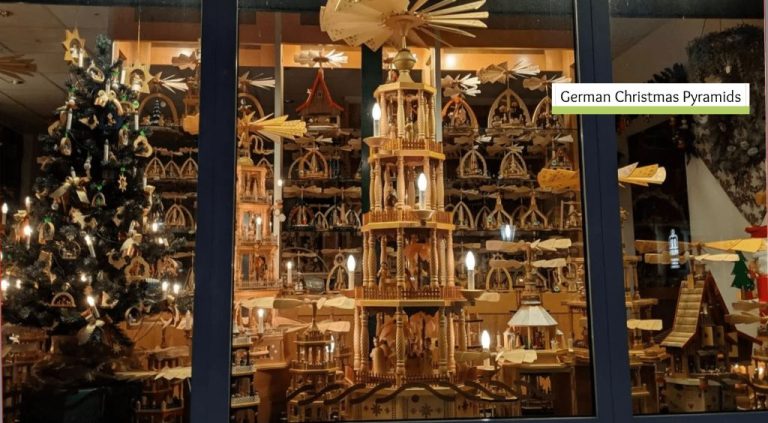What Does It Mean When People Put Candles In The Window Sill?
The practice of placing candles in the window dates back centuries and spans across many cultures. Though the specific meanings and traditions vary, the custom broadly symbolizes guidance, remembrance, prayer, celebration, and welcome.
A candle glowing in the window has long served as a beacon – representing spiritual light, warmth, and hope. Throughout history, candles in windows have marked holidays, honored loved ones, shared knowledge, and offered hospitality.
Origins
The tradition of placing lit candles in windows dates back centuries and arose independently across many cultures. Though the exact origins are unknown, historians point to early beginnings in pre-Christian Irish and Scottish pagan rituals celebrating the winter solstice and yuletide. The flames were thought to ward off the darkness and evil spirits during the long winter nights.
In early colonial America, candles in the window had religious meaning for Christians, signifying light, warmth and welcome. During the American Revolution, candles in windows emerged as a more political symbol of rebellion against British rule and solidarity with the independence movement.
So while the roots of the tradition vary, lighting window candles has long served as a symbolic tool for people seeking solace, safety or community during dark times. The simple act channels our intrinsic desires for light, hope and human connection.
Religious Meanings
The tradition of placing candles in windows has significant religious symbolism in many faiths. In Christianity, it is often associated with the Advent season leading up to Christmas. The candles represent the light of Christ coming into the world, as well as a beacon to welcome Mary and Joseph before Christ’s birth.
In Catholic and Orthodox churches, candlelight also represents Christ as the light of the world and the warmth and illumination that faith provides. During Hanukkah, Jewish families light a menorah in the window to commemorate the miracle of the oil lamps burning for eight nights in the rededicated Temple. Hindus light diyas (oil lamps) during holidays like Diwali to spread light over darkness and bring hope.
In many religious traditions, the candle flame stands for the human soul or spirit. Placing lit candles in the window can symbolize one’s prayers, intentions, or connection to the divine. This is especially common during holidays and festivals that honor deities or venerated figures.
Spiritual Meanings
Throughout history, candles have held mystical significance in many cultures and spiritual traditions. They are often used as talismans against evil spirits or as symbols to welcome benevolent spirits. The small, flickering flame of a candle is thought to connect the physical world with the spiritual realm.
In paranormal investigations, candles are sometimes used to detect spirits. It’s believed that a disturbance in the candle’s flame may signify a ghostly presence. The candle’s light is thought to attract spirits and allow communication with the living.
Wiccans and modern pagans often use candles of different colors in spells and rituals to harness supernatural energies. White candles may represent purity, while red, orange, and yellow candles symbolize passion, creativity, and willpower. Green and blue candles can promote healing and inner peace.
In the new age movement, candles help focus intention and manifestation. Lighting a candle while visualizing goals and making affirmations is thought to amplify inner desires and accelerate the law of attraction.
Overall, the mystical glow of candlelight evokes spiritual contemplation and a sense of magic or higher guidance. Many view candles as protective talismans and conduits for invisible, transcendent forces.
Welcoming Guests
In some cultures, placing a candle in the window or window sill is a sign of hospitality. It sends the message that guests are welcome and will find warmth, comfort and refuge inside. The lit candle shines like a beacon, letting weary travelers know that the home’s doors are open.
This tradition dates back centuries, originating in small villages and remote homesteads. With limited light at night beyond the moon and stars, a candle in the window offered both practical lighting and a symbol of safety. It showed that the household was awake and ready to tend to any visitor’s needs.
Over time, a candle in the window became synonymous with friendly hospitality. It signals that visitors can expect shelter, a hot meal, and a place to rest. The glowing candle flame expresses that all are welcome, regardless of the hour. It shines steadfast through the night, guiding guests inside to enjoy the gifts of food, fellowship and repose.
Honoring the Dead
One of the most common reasons for placing candles in windowsills is to honor loved ones who have passed away. The candle’s flame is thought to help light the way for spirits of the deceased as they transition to the afterlife. In many cultures, candles are lit on altars or gravesites during Day of the Dead rituals, funerals, memorial services, and on the anniversary of a loved one’s death.
The tradition stems from the ancient belief that fire helped guide spirits to their resting place. Lighting a candle in the window can serve as a beacon so deceased loved ones can find their way home one last time to visit with family. It’s a symbolic way to keep connections alive even after death. The candle flame represents the light in the heart that never goes out.
In some traditions, different colored candles hold special meaning related to mourning. White candles symbolize reverence, unity and innocence of the soul. Blue candles represent tranquility, harmony and spirituality. Yellow or gold candles signify wisdom and openness to receiving enlightenment from deceased ancestors.
Many people light memorial candles that remain burning for 24 hours or longer. The continuous flame signifies enduring love, provides ongoing protection, and helps grieving families feel like their loved ones are still present with them during the difficult days and nights after a death. It brings a sense of peace and solace. The glowing candle is like a silent prayer that keeps the connection and memory alive.
Celebrations
Placing candles in the window sill is commonly associated with holidays and festivals around the world. During Christmas, it’s traditional in many countries to put candles in the windows on Christmas Eve. This symbolizes guiding the Christ child and welcoming Christmas and the return of light during the winter solstice. In Ireland, a candle in the window on Christmas Eve is thought to welcome Mary and Joseph. On the Jewish holiday of Hanukkah, candles are placed in the windowsill each night. This commemorates the miracle of the oil lasting for 8 nights during the rededication of the Second Temple.
In China and other Asian countries, candles are put in windows during the Mid-Autumn Moon Festival, which takes place under the full moon. The candles help guide and welcome the spirit of the moon. During Diwali, the Hindu festival of lights, earthen oil lamps called diyas are often placed in windowsills. This symbolizes the triumph of light over darkness and good over evil. Overall, the common thread is that festival candles invite the light and spirit of the occasion into one’s home.
Protest/Vigils
Displaying candles in windowsills has a long history as a symbol of protest and social justice movements. During times of political unrest or activism around a social cause, people will often place lit candles in their windows as a sign of solidarity and remembrance.
This practice traces back to colonial times in America, when candles in windows served as signals of resistance against British rule. Later, in the 20th century, candlelight vigils became a common way to honor lives lost to tragedy, violence, or social injustice. Groups like Mothers Against Drunk Driving helped popularize candle vigils to raise awareness of their cause.
In more recent times, the candle as a symbol of protest has been employed by various social movements. After Michael Brown was killed in Ferguson, Missouri in 2014, supporters placed candles in windows to honor his life and call for police reform. Candlelight vigils similarly became a form of demonstrating solidarity after the 2016 Pulse nightclub shooting in Florida.
When placed in windows, candles can signify that the occupants of a home stand with a particular social justice cause or support victims of injustice or tragedy. The soft glow emanating from the window into the darkness carries connotations of hope, remembrance, and quiet resistance.
Romantic Symbolism
Candles can also represent love and romance. The flame of a candle symbolizes the spark of passion between two people. It’s common for couples to incorporate candlelight into romantic dinners, proposals, weddings, and anniversaries. The candle’s glow creates a warm, intimate setting. Blowing out candles together signifies shared hopes and dreams for the future.
For couples in long-distance relationships, lighting a candle can represent keeping the flame of love alive even when separated. On nights apart, each partner lights a candle to feel connected. As the candle slowly burns down, it counts the time until they reunite.
Giving a scented candle as a gift conveys a message of affection. Fragrant candles help create an ambiance of romance. Their soothing aromas and flickering flames make them a popular present for Valentine’s Day, birthdays, and other occasions.
Overall, candlelight remains a quintessential symbol of passion, intimacy, and enduring love. The custom of lighting candles in the name of romance has spanned centuries and cultures. Though ways of courtship have modernized, candles still retain their timeless magic and romantic symbolism.
Conclusion
In summary, placing candles in windows holds a variety of symbolic meanings across cultures. Some of the most common associations include honoring the dead, welcoming guests, celebrating holidays, showing support for causes, and creating a romantic ambiance.
The candle’s warm glow has long been a beacon in the darkness, making it a poignant symbol of remembrance, hope, and connection. Throughout history, people have placed candles in their windows to guide loved ones home, commemorate the deceased, rally for change, and spread light during the winter months.
While the specific meaning may vary, the presence of a candle in a window often signals that the home is occupied, open, and ready to receive visitors. It represents an invitation inside and conveys a message of comfort, safety, and community.





